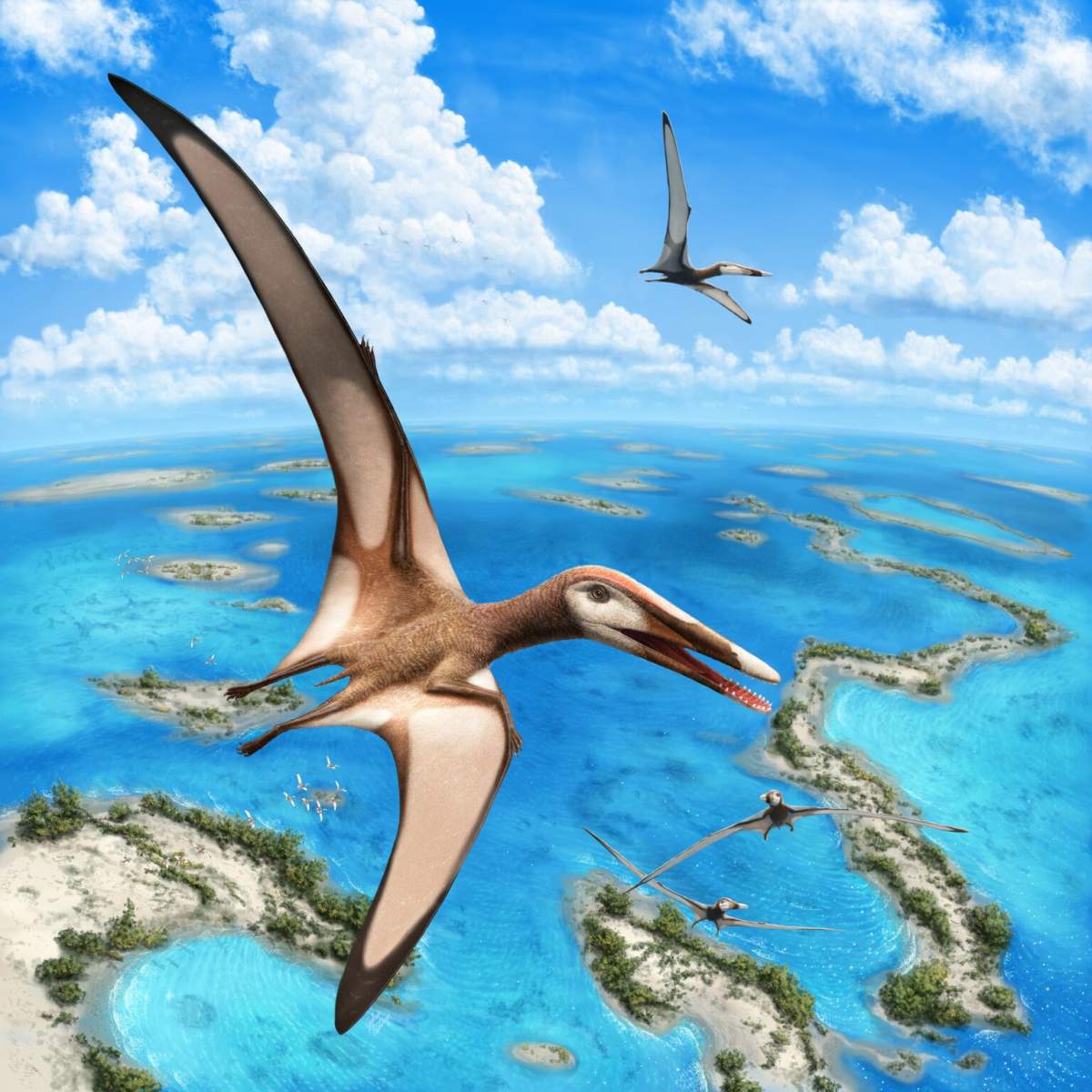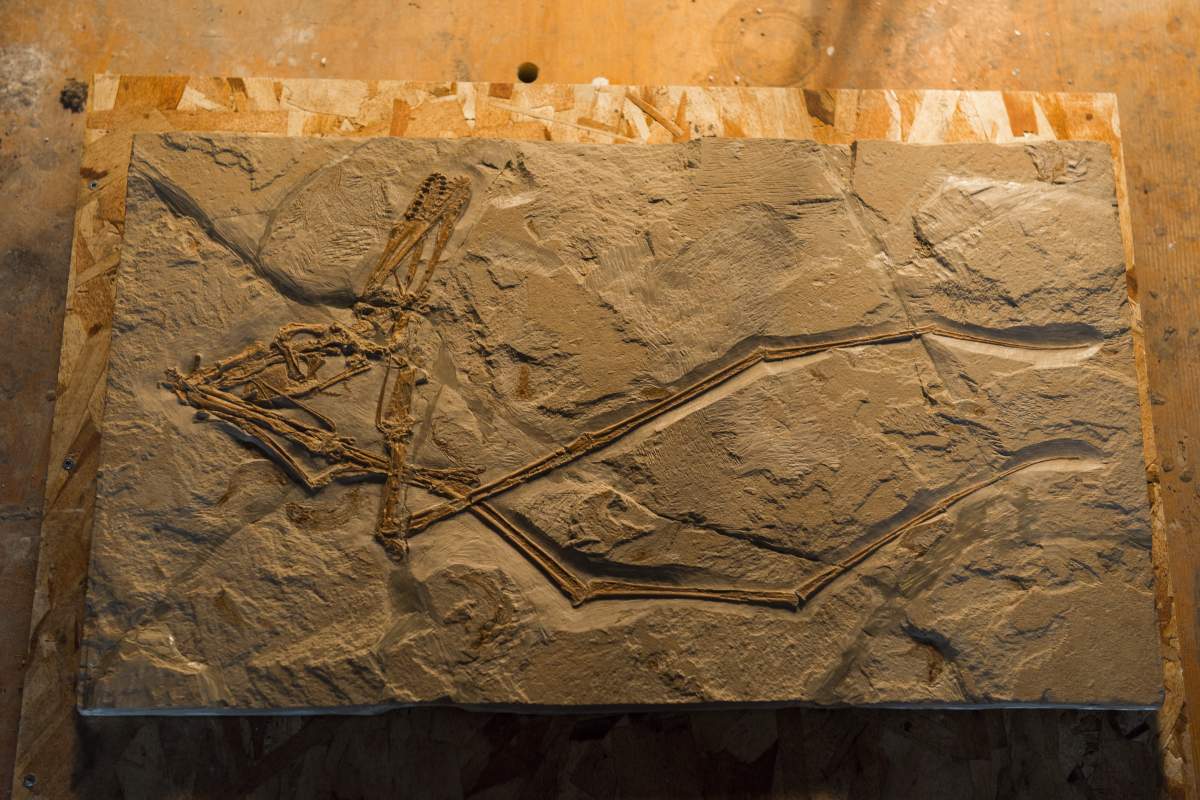Ancient flying reptiles known as pterosaurs were much more diverse than originally thought, according to new research by an international group of paleontologists — including scientists at the University of Alberta and the Museu Nacional in Rio de Janeiro, Brazil.

An ancient and perfectly preserved pterodactyl specimen originally discovered in a limestone quarry near Beirut, Lebanon more than 15 years ago was the focus of the research.
Paleontologist Michael Caldwell, co-author and University of Alberta professor of biological sciences and earth and atmospheric sciences, said he had the chance to study the pterodactyl specimen because he was already researching snake and worm fossils from the same type of stone.
READ MORE: Alberta scientist part of international discovery of ‘piece of the puzzle’ snake fossil
“A pterodactyl is a kind of pterosaur, which is sort of like a duck — it’s a kind of bird,” Caldwell, explained, adding they were closely related to crocodiles and other kinds of dinosaurs.
“This paper describes the very first pterodactyl of its kind from the Middle East.”
He said it had long, narrow wings with a span of a metre to a metre-and-a-half, but a body about the size of a sparrow and a head longer than its body (“Sort of wings with a mouth”), and likely fed on crustaceans along the surface of the water; much like modern seabirds such as the albatross and frigatebird.
The reptile existed from about 240 million years ago until around 95 million years ago; in the early part of the Late Cretaceous period.
It lived in the middle of what is now called the Tethys Seaway — a vast expanse of shallow marine waters filled with reefs and lagoons, separating Europe from Africa and stretching all the way to Southeast Asia.
“Previous to this report, in scientific reports, all of these kinds of pterodactyls were only known from south China.”

Get breaking National news
Caldwell said the study found the pterodactyls living in the Tethys Seaway are related to those from China.
“This means that this Lebanese pterodactyl was part of a radiation of flying reptiles living in and around and across the ancient Tethys Seaway, from China to a great reef system in what is today Lebanon,” Caldwell explained.

“The diversity of these ancient animals was much greater than we could ever have guessed at, and is likely orders of magnitude more diverse than we will ever be able to discover from the fossil record.”
READ MORE: Scientist finds fossil evidence of sabre-toothed cat in southern Alberta
The other author of the study was Brazilian geologist and paleontologist Alexander Kellner, a leading expert in the field of studying pterosaurs. He said pterosaur specimens, the first vertebrates to achieve powered flight, are still quite rare in Africa and the Middle East.
“Here we describe the best preserved material of these groups of flying reptiles known from this continent so far, shedding new and much needed light on the evolutionary history of these creatures,” Kellner said.
Caldwell said the discovery helps researchers understand more about the extinct animals.
“That’s always the surprise part with paleontology because, of course, you don’t know what you’re going to find in the rocks.”
“You don’t know what these animals looked like — they’ve been extinct for millions of years — and one new fossil often helps overturn previous ideas because it brings along with it information you could have never predicted.”
READ MORE: Alberta researcher says complex life may have evolved earlier than thought
The research was conducted with Kellner and Roy Nohra of Saint Joseph’s University in Beirut, Lebanon. It was also done in collaboration with the ICP Catalan Institute of Palaeontology Miquel Crusafont in Barcelona, Spain and Expo Haqel in Haqel, Lebanon.
“There’s the science part of it and that changes the way we see the evolution of this group of flying reptiles, but there’s also the public outreach and education side of this particular story which I personally find really exciting,” Caldwell said.
“We had the chance to work with both private collectors and a public institution in Lebanon,” he said, adding it was satisfying to to help them realize something they couldn’t have done on their own.
“They didn’t know the right paleontological community who could work with this material, they didn’t have access to a preparatory who could do the kind of magical prep work that was actually required to reveal the specimen in a way that would also maximize the scientific information and data that we could withdraw the specimen.”
The specimen, which was recovered in pieces, spent about eight years at the University of Alberta being put back together and studied.
Caldwell said it took years of negotiating with the private owner to ensure the fossil went to a museum where it could be studied, instead of sold.
“For a private owner of a specimen, this can be kind of difficult because they want to make some money and earn a living off of what it cost them to get it out of the ground.”
Now, a cast of the specimen remains in Edmonton and the original is on display at the Mineralogy Museum at Saint Joseph’s University in Beirut.
“They’ve got a great little online story about the specimen, they’ve done some brilliant and spectacular computer 3D animation and hologram work with the thing,” Caldwell said.
READ MORE: Raptor dinosaur skeleton found in southern Alberta hailed a ‘scientific goldmine’
“We’ve kind of – full circle – come to both the scientific value but also the realized public value and public education component of the story, giving it a bigger impact than we normally have.”
The paper, “First complete pterosaur from the Afro-Arabian continent: insight into pterodactyloid diversity” is published in Scientific Reports.












Comments